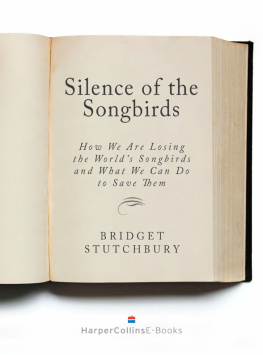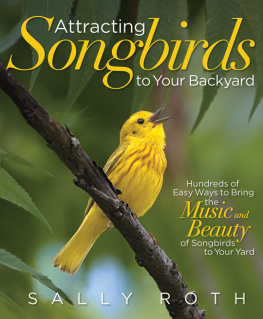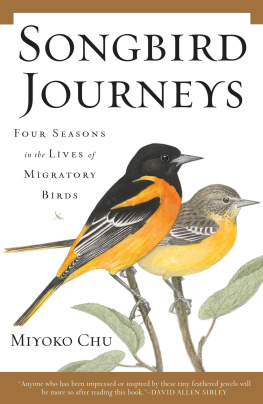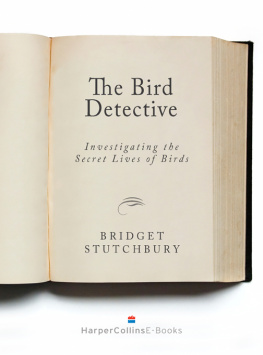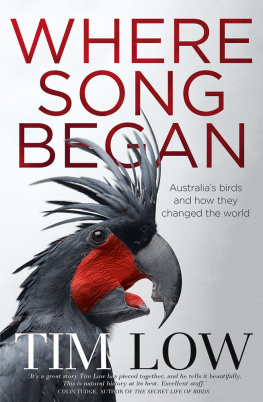The Tanagers and Warblers of Gamboa, Panama
B irds were among natures delights during my childhood, but they were not the stars of the show. Visits to the cottage were a kids dream, filled with swimming, canoeing, and building makeshift forts in the woods. During games of hide-and-seek I shrank into the ground, breathing in the tangy scent of pine needles, and passed the time watching whirligig beetles clumsily rowing into each other, blue damselflies dancing an aerial ballet over the water, and spiders doing tightrope walks. My family would gather at the living-room window to admire the imposing figure of the great blue heron standing on his rock or when someone spotted a merganser duck and her fluffy brood bobbing in the waves along the shoreline. On crisp fall mornings, loud and insistent honking sparked a stampede to the dock, where we counted the low-flying geese as they headed south one squadron after another. I dont remember paying much attention to the little songbirds that nested in the blueberry bushes, cedars, and pine trees. The red-eyed vireos, song sparrows, and yellow-rumped warblers went about their business year after year despite three noisy kids and a dog that invaded on weekends and summer vacations.
Little did I know that songbirds would lead me on a life of discovery and adventure, from dodging surprised rattlesnakes in the desert of Arizona to dodging aerial bombardment by angry howler monkeys in the tropical rainforests of Panama. The gateway to my passion for these feathered jewels began with the graceful swallows, though my own interest was in their fierce battles for nesting cavities. As an undergraduate student, my summer home at a field station in southern Ontario was also home to dozens of nest boxes that were lined up row after row in several different hayfields, each one with a vigilant tree swallow perched atop or flying nearby. Shiny blue backs glittered in the sun as the bickering swallows circled their boxes like little fighter jets, scolding and chasing intruders that dared to come too close. The nest boxes are so valuable that both males and females have knock-down, drag-out fights with the desperate stragglers that arrive later in spring and have no place to breed. Once, during nest checks, I opened the door of a box to find two females fighting so intently they did not even notice the giant face peering in at them.
I studied the swallow battles for several years and earned a masters degree, but this was not enough for me. I was hooked for life on the challenge and satisfaction of posing questions of nature and devising ways to work out the answers. My Ph.D. at Yale University in the late 1980s was on another swallow, the purple martin, though this time I wanted to know how young males finesse their way to home ownership among older males who control all the nest cavities. Each spring I loaded up my pickup truck with most of my worldly belongings and drove across the country by myself to study colonies of martins in southern Oklahoma. This is where I saw my first roadrunner and spent many hours awestruck with the bright salmon-orange flashes and elegant tail streamers of scissor-tailed flycatchers as they did spectacular loop-the-loops in the air as females quietly looked on.
I got to know tree swallows and purple martins intimately after holding dozens in my hand and spending hundreds of hours watching them at their nesting houses. But until the end of my Ph.D., I had barely given a thought to what their lives were like after they left their breeding grounds. My outlook changed forever when I was invited along on a field trip to Brazil with the Purple Martin Conservation Association and Dr. Gene Morton, a senior scientist at the Smithsonian Institutions National Zoological Parkand, as it turned out, my future husband.
After a gruelling day of travel in early February, we ended up in southern Brazil at a small lodge in the Itatiaia National Park sipping a well-earned caipirinha, the national drink. The next morning I sat on the patio taking in my first look at wild toucans, parrots, and other exotic tropical birds. But we were there to study martins, not bird watch, so after breakfast we began the long drive to the busy town of Ribeiro Preto in the state of So Paulo. We needed to find the park in the centre of town where martins slept at night by the thousands, so our driver pulled up to a group of men standing by the side of the road.
In his rough Spanish, Gene told them we were looking for the swallows, or golondrinas. Amid wide smirks, winks, and knowing looks, they gave us the directions. Our Brazilian driver laughed and explained that golondrina was the local nickname for the prostitutes who, like the martins, congregated in the park at night. This seemed like such a foreign world to me, yet it was just as much a home for purple martins as the familiar nesting houses I had studied thousands of kilometres away.
The next year I worked with Gene at the National Zoo and began a study of hooded warblers on their wintering grounds in Mexico, and we married a few years later, after I took on a faculty position at York University, in Toronto. Over the past decade our family has lived a migratory lifestyle of our own while studying birds, dividing our time between our suburban home north of Toronto, our old farmhouse in northwestern Pennsylvania, and the tropical forests of Panama. Gene and I have spent many hours walking through the woods or sitting on the back porch at the farm, happily on the lookout for our daily fix of discoveries. These can be as simple as seeing chickadees stashing seeds under the bark of cedar trees, catching a parasitic wasp in the brutal act of laying her eggs inside a living caterpillar, or rare sightings like a male cowbird giving courtship displays to a rusty blackbird. Our children are growing up with parents who net and band birds in the backyard, raise dozens of Promethea silk moths on the screened-in porch, and drive around town with an antenna on the roof of the minivan listening for radio-tagged purple martins. Their patience is sometimes pushed to the limit, for instance, when they run away from the picnic table yelling Bee! while I calmly explain that the offending creature is a wasp, not a bee.
I have spent my entire adult life studying and enjoying birds, taking for granted that they will be there for future generations to do the same. When I did my graduate work on tree swallows, the alarm bells were not yet ringing, and one heard very little about disappearing songbirds. Times have changed though, and now we have a long list of North American migratory songbirds that are disappearing at a frightening rate. Wood thrush, Kentucky warblers, bobolinks, and the eastern kingbird are among the victims. By some estimates, we may have already lost almost half the songbirds that filled the skies only forty years ago. The threats are almost too many to count: destruction of wintering habitat, pesticides, cowbirds and other predators, light pollution, and poor breeding habitat are among the problems birds face.


